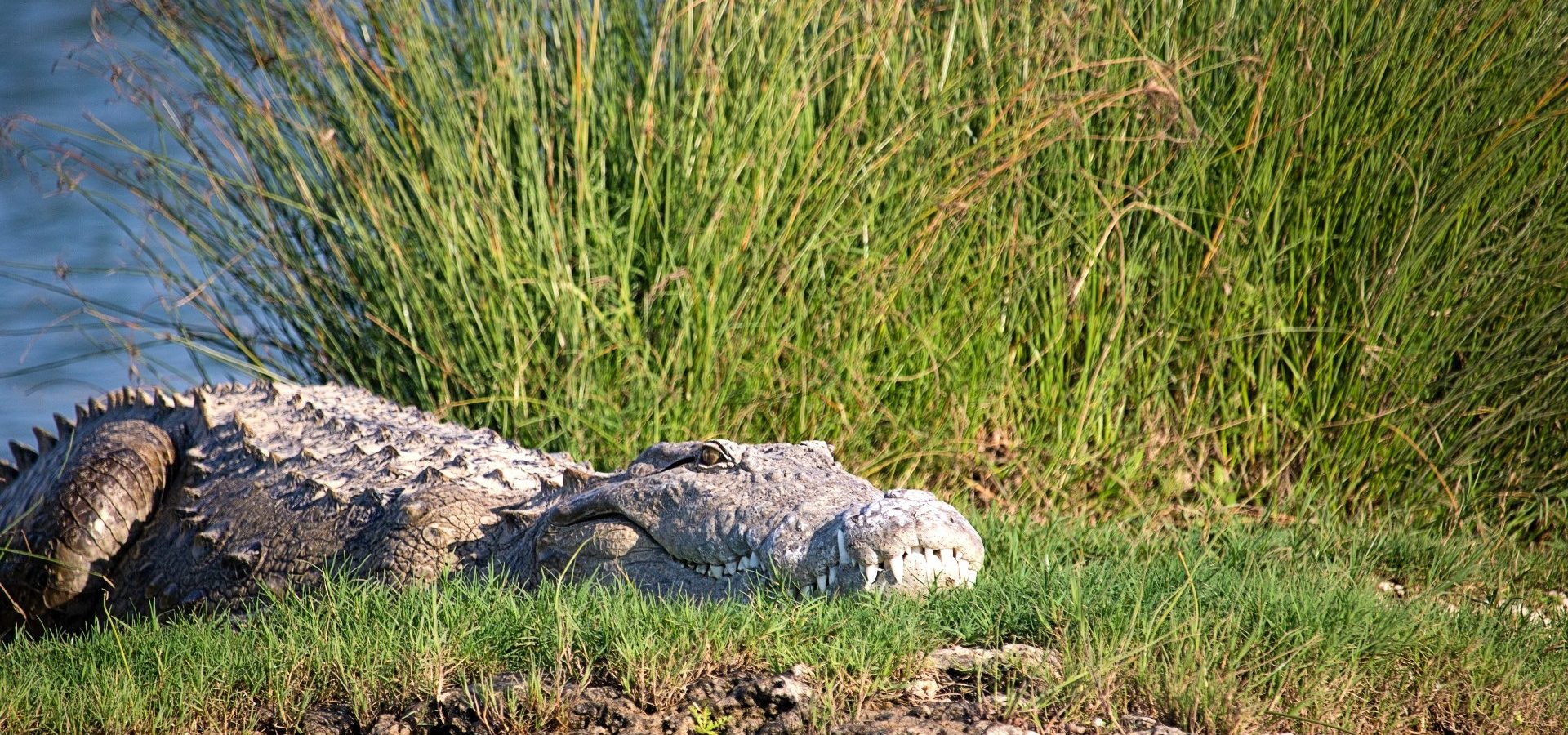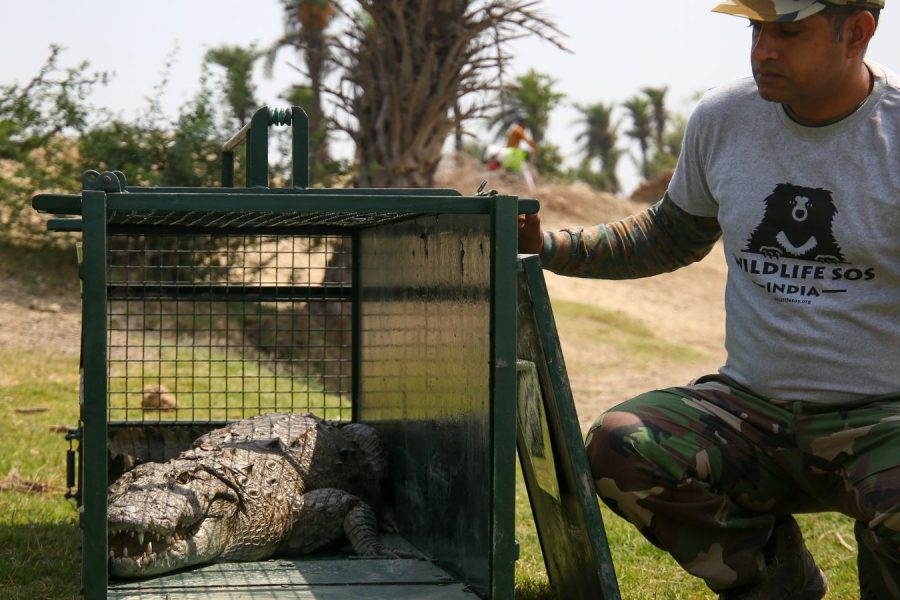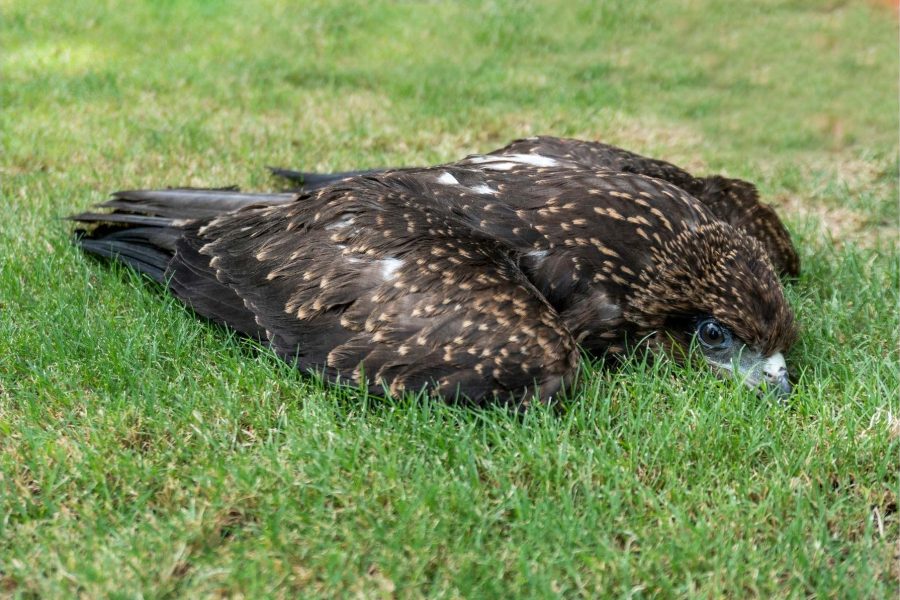Given the diverse settlements found in the state of Uttar Pradesh, urbanisation has still not encroached upon natural spaces and tainted their beauty. However, being the state with the highest human population in India, the threat of urban expansion looms over these precious natural areas. At present, a large number of villages are present in major districts of the state such as Agra, Firozabad, Mainpuri and Hathras, to name a few. As a result, vast areas of agricultural land and water bodies still dot the landscapes.
These water bodies, in the form of streams, canals and lakes, act as suitable habitats for a certain semi-aquatic inhabitant. The mugger crocodile is a native crocodylian and the largest reptilian neighbour of the citizens of Agra and other nearby cities, towns and villages. Being present and actively working for over a decade in the Agra-Mathura region, Wildlife SOS has faced numerous instances where our team, in collaboration with the Uttar Pradesh Forest Department, had to rescue crocodiles from situations of distress across various parts of the state. These also served as the perfect window of opportunity to observe human-crocodile interactions in the state.
Most rescue calls related to crocodiles originate from rural areas or those adjoining the villages in the districts. There is a simple explanation for this: freshwater environments are some of the most conducive mugger crocodile habitats, including village ponds, and even wetlands formed after heavy rains in the agricultural fields.
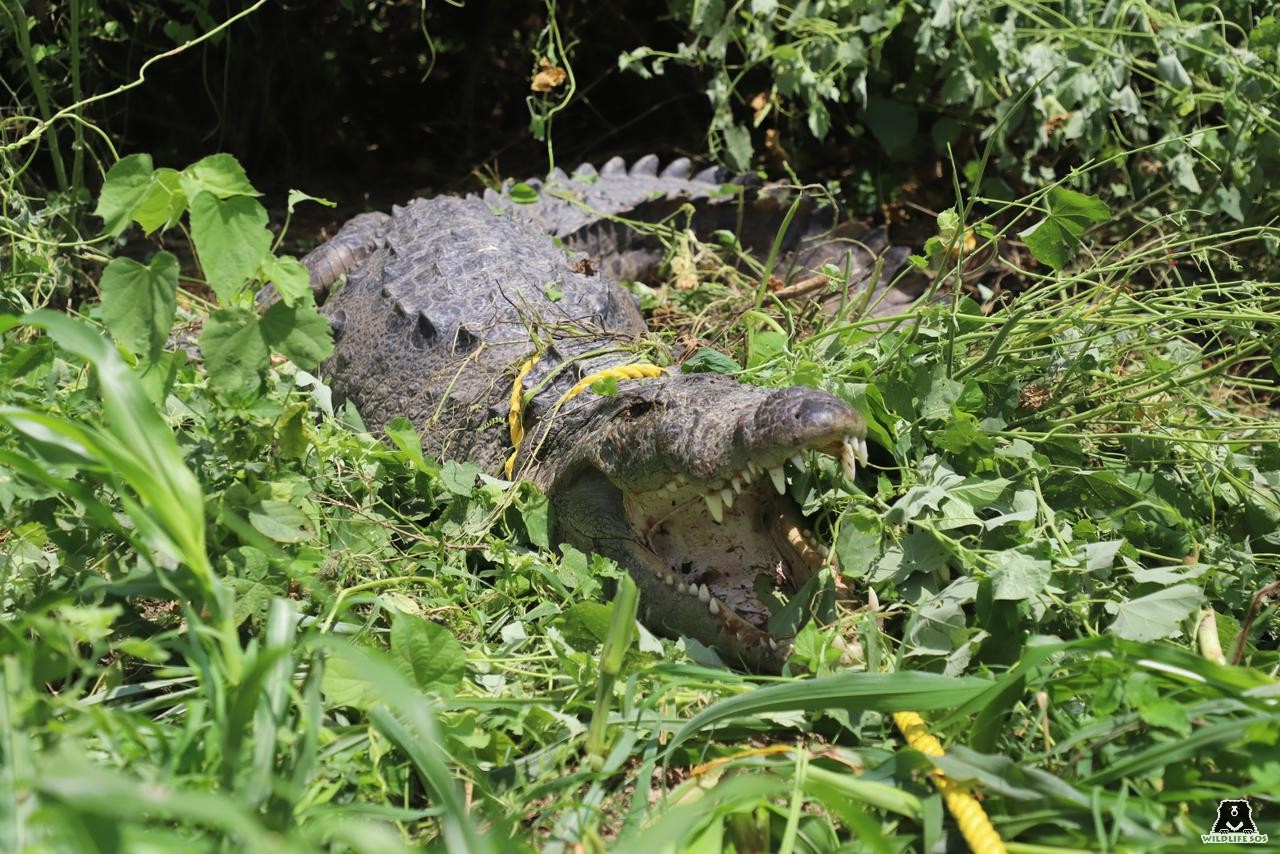
The Wildlife SOS Rapid Response Unit has rescued 29 crocodiles since January 2018. However, the team has been conducting animal rescues much prior to that. Crocodile rescues started around the same time when the organisation initiated rescuing other smaller animals such as snakes, civets, and monitor lizards. Wildlife SOS has conducted numerous rescues from Pinahat in the Bah area of Agra district as it is close to the Chambal river, one of the most prime habitats of mugger crocodiles in Uttar Pradesh.
When Wildlife SOS initially began its rescue operations, the number of rescue calls were much lower due to lack of knowledge about the locally found animals. Ignorance consequently led to the mortality of several crocodiles in areas that recorded high encounters with them. In fact, awareness was so little among people that they even mistook the Wildlife SOS Rapid Response Unit to be a government organisation.
Wildlife SOS’ rescue work with crocodiles has taken the team to many parts of the state. In one such unique rescue case, Wildlife SOS conducted the rescue of a gigantic individual measuring over 12 feet in length, from a village near Firozabad. The crocodile, which was the longest ever rescued by our team, was spotted in a large river at the village. The rescue team travelled over 200 km to reach the location, and it took them five long and arduous days to rescue the giant. The crocodile was dubbed as a “problem animal” as it had attacked a human being, and relocating the animal therefore was of utmost exigency.
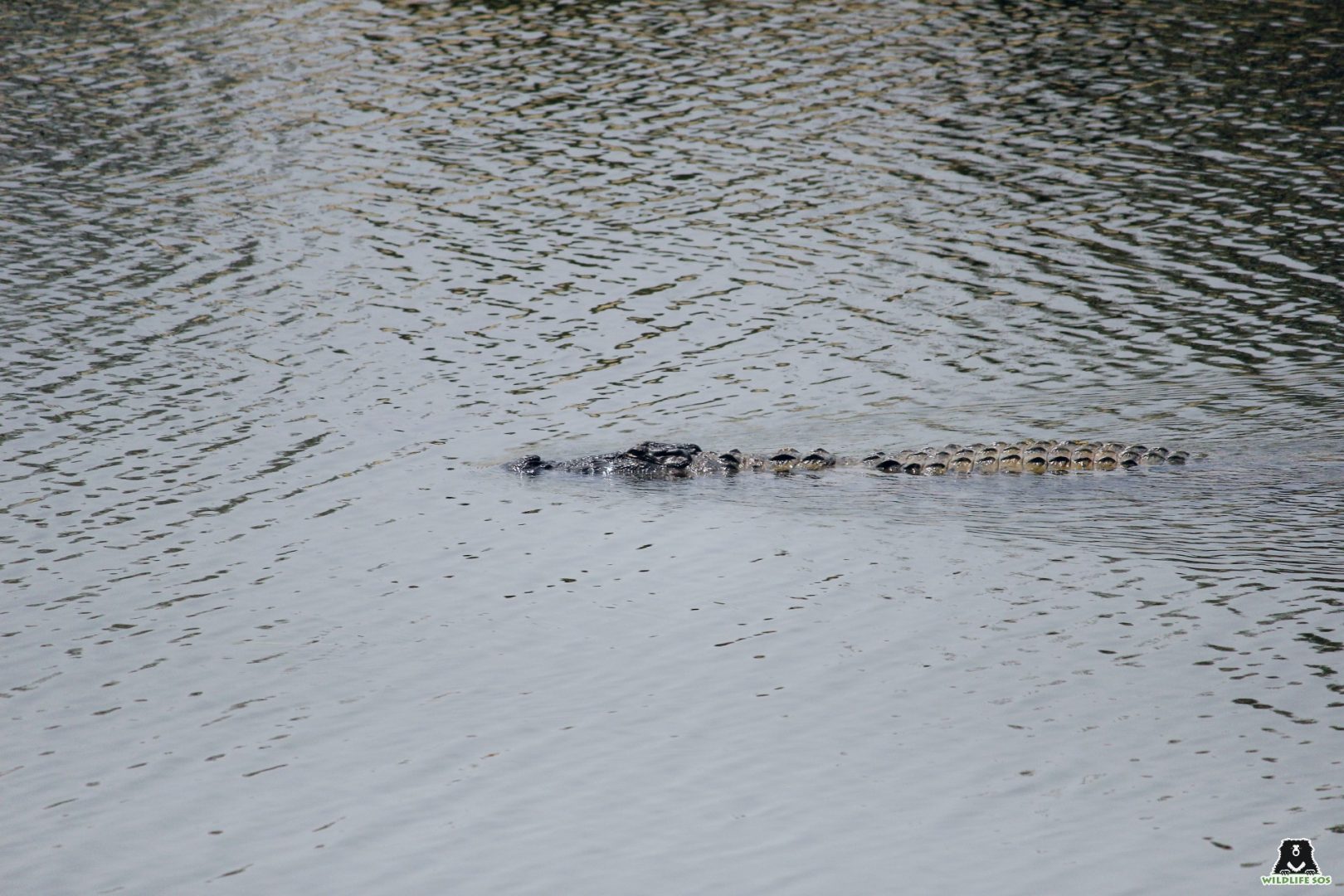
A major reason contributing to the success of the crocodile’s rescue and relocation can be attributed to awareness. The people were taught how the crocodile was a crucial part of that aquatic ecosystem. The water body was its home, its natural habitat. Once the locals there understood this concept, it was possible to quell the crowd’s agitation.
Crocodiles are reptiles that are much slower on land, compared to their agility in water. When a crocodile comes out of water and enters a village area, villagers inform authorities and await the arrival of the joint team of Wildlife SOS and forest department to conduct extrication of the reptile in the most professional and humane way possible.
This change in behaviour towards saving the reptiles by reaching out to forest department authorities has resulted from the repeated rescues conducted by our team. The organisation has witnessed a gradual rise in the number of rescue calls, as people are now more sensitised about crocodiles and do not attack one the moment they spot it. September 2023 saw four crocodile rescue operations conducted successfully, and it was one of the highest concentrations of crocodile rescue calls made in a single month in recent history.
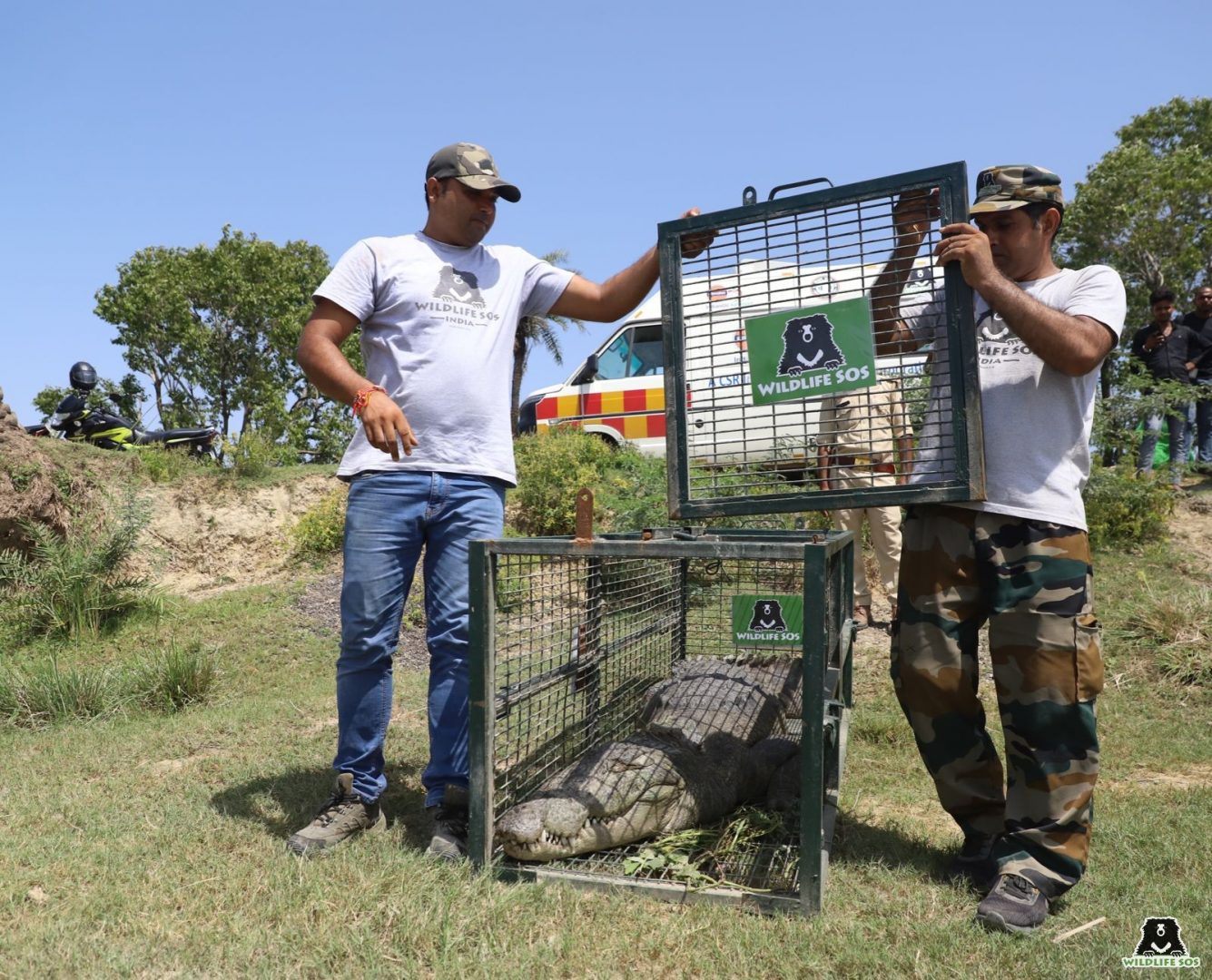
A large reptile like a crocodile piques the interest of onlookers, and our team capitalises on their curiosity to spread awareness about the animal. Our rescuers utilise each and every rescue as an opportunity to educate the native population about crocodile behaviour. This is one of the most effective ways to mitigate conflict at source.
Mass awareness about the significance of co-existence lies at the heart of positive human-crocodile interactions. Wildlife SOS runs an emergency rescue helpline in Agra-Mathura (+91 9917109666) to relentlessly work on crocodile conservation, as well as resolving human-crocodile conflict. If you wish to see our effective work continue, you can consider becoming a monthly donor for us!

